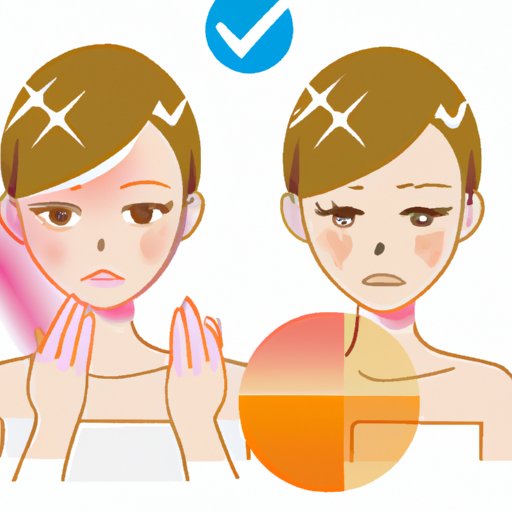
I. Introduction:
If you’re planning on catching some rays and getting a tan, it’s important to understand how long you should spend in the sun. Tanning time can vary depending on a variety of factors, such as your skin type, the intensity of the sun, and the risk of skin damage. In this article, we’ll explore the science behind tanning time and how to safely achieve a beautiful, natural tan.
II. The Science Behind Tanning Time:
Before we discuss how long to tan, it’s important to understand how your skin type affects your tanning time. Fair skin, for example, is more prone to sunburn and requires less time in the sun. On the other hand, darker skin can tolerate more exposure to the sun.
The amount of melanin in your skin also plays a role in how long you should tan. Melanin is a pigment that gives your skin its color and protects it from UV radiation. People with higher levels of melanin can stay in the sun for longer periods without burning.
The Fitzpatrick skin type scale is a useful tool for determining tanning time. This scale measures how your skin reacts to the sun and assigns a number from one to six, with one being the lightest and most sensitive skin type and six being the darkest and most tolerant skin type. People with lower numbers on the scale should spend less time in the sun, while those with higher numbers can tolerate more sun exposure.
III. The Relationship Between Tanning Time and Risk of Skin Damage:
Overexposure to UV radiation can cause serious skin damage and increase the risk of skin cancer. UV radiation can also cause premature aging and other skin problems such as wrinkles and age spots. It’s important to be aware of the dangers of excessive tanning and to limit your time in the sun. Less is more when it comes to tanning and health.

IV. Popular Myths and Misconceptions About Tanning Time:
One common myth is that a base tan can protect you from sunburn. However, any form of tanning without proper protection can still cause skin damage. It’s also a misconception that you can’t get sunburn on a cloudy day. In reality, up to 80% of UV rays can penetrate through clouds and still cause damage to your skin.
V. How to Properly Time Your Tanning Sessions for Optimal Results:
The “smart tanning” technique is a great way to gradually build up a natural-looking tan without risking overexposure to UV radiation. This involves starting with short tanning sessions, such as 10-15 minutes, and gradually increasing your time in the sun. It’s important to always wear sunscreen and protect your skin with clothing and hats.
Remember, a deep tan doesn’t happen overnight, and it’s important to be patient and take your time. Overexposure to the sun can cause skin damage that may not be visible until later in life.
VI. The Importance of Moderation in Tanning:
It’s better to tan for shorter periods of time rather than spending hours in the sun. Tanning in shorter sessions can minimize the risk of sunburn and skin damage while still allowing you to achieve a natural-looking tan. It’s important to always wear sunscreen and protect your skin with clothing and hats.
Excessive tanning can increase your risk of skin damage and may not even lead to a deeper, longer-lasting tan. It’s important to be patient and take your time when tanning to ensure optimal results and minimize the risk of damage to your skin.
VII. Tanning Dos and Don’ts:
When it comes to tanning, there are certain guidelines you should follow to ensure safe and effective tanning. For example, people with fair skin should only spend a few minutes in the sun at a time, while those with darker skin can tolerate longer exposure. It’s also important to always wear sunscreen, even on cloudy days.
Before and after tanning, it’s important to moisturize and protect your skin. This can prevent dryness, flaking, and other skin problems. Tanning beds and other high-intensity tanning methods are also not recommended since they can increase the risk of skin damage and cancer.
VIII. How to Stay Safe While Tanning:
There are several ways to protect your skin and minimize the risk of sunburn and skin damage while tanning. Always wear sunscreen with at least SPF 30, and reapply it every two hours. You should also wear protective clothing such as hats and long sleeves.
If you notice any signs of skin damage, such as redness or blisters, it’s important to take a break from tanning and allow your skin to heal. If symptoms persist, seek medical attention immediately.
IX. Conclusion:
When it comes to tanning, it’s important to be patient and take your time. Whether you’re tanning at the beach, by the pool, or in your backyard, always wear sunscreen and protect your skin. Gradually building up a natural-looking tan is a great way to minimize the risk of skin damage and achieve optimal results. Remember, less is more when it comes to tanning and health.





